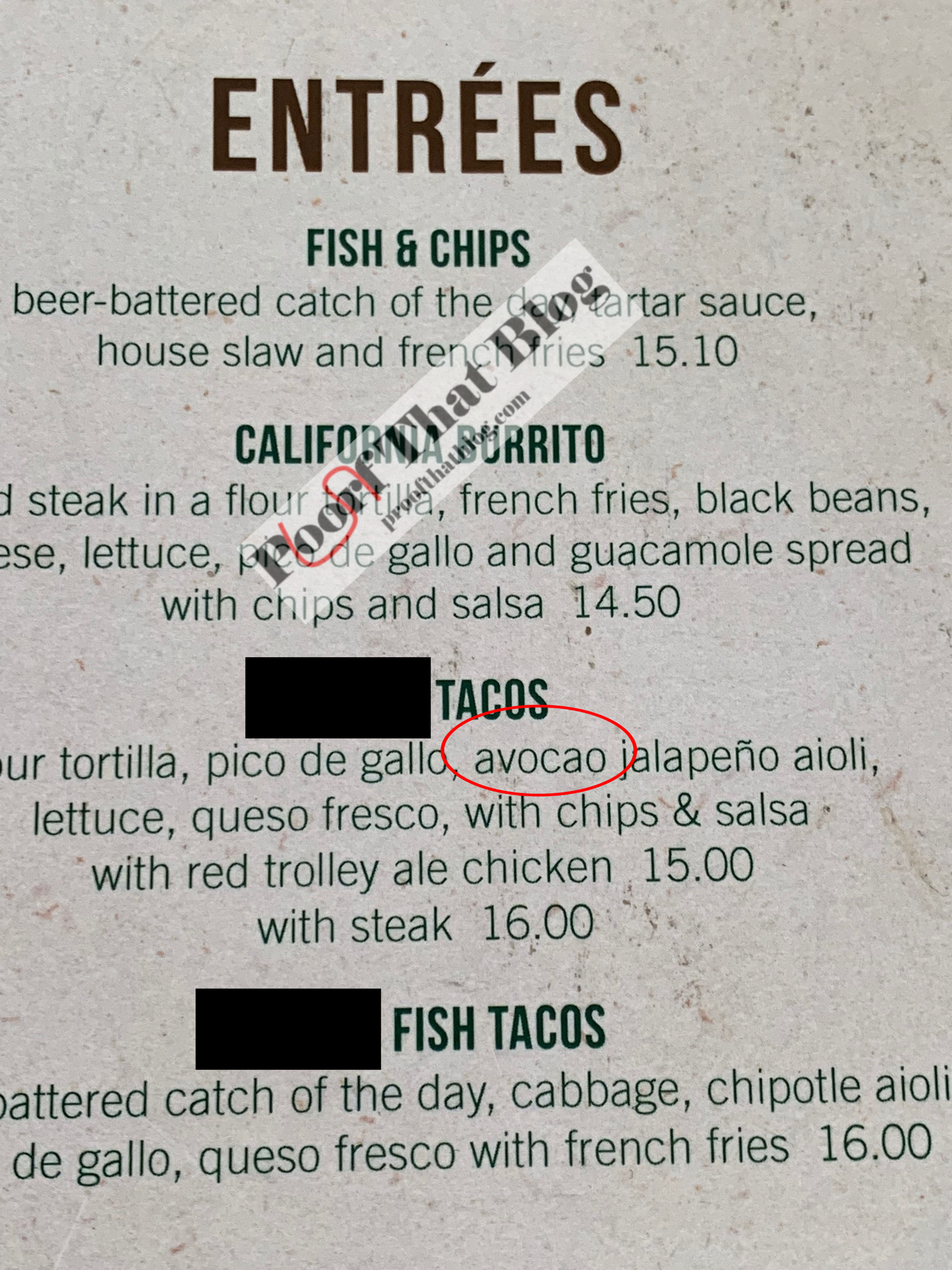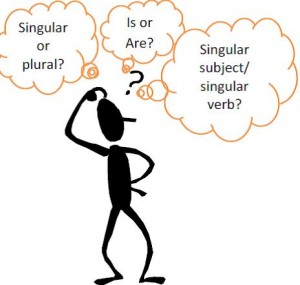I hit the jackpot again at an airport restaurant in San Diego where I found multiple errors in the menu.


I hit the jackpot again at an airport restaurant in San Diego where I found multiple errors in the menu.



Copyright: alexmillos / 123RF Stock Photo
As we’ve learned before, a verb must always agree in number and person with the subject. See Singular Verb, Plural Subject, Both . . . and, It’s All About the Agreement. But what if the “person” is an entity? Do you then use a singular or plural verb?
Typically, if you are talking about the entity as a unit, you use singular verb:
If the entity is a company, it is usually treated as a unit. Just be sure that you carry the treatment as singular or plural every time you are talking about that entity. For instance:
If you are want to emphasize that the members of the entity are acting independently, then a plural verb is correct:
To help figure it out, replace the entity with “it” and replace members of the entity with “they” to make sure you are using the right verb. Using the examples above, replace the entity with the word in parenthesis to see how it works:
Hopefully that was useful to you. If it was, please share this post so others can be as smart as you are!
 We’ll look at more subject/verb agreement today. If you missed last week’s topic, please see “Singular Verb, Plural Subject, Both . . . and, It’s All About the Agreement.”
We’ll look at more subject/verb agreement today. If you missed last week’s topic, please see “Singular Verb, Plural Subject, Both . . . and, It’s All About the Agreement.”
When you have two subjects connected by and and preceded by each, every, many a, or many an, use a singular verb.
The same sentence without every would use a plural verb.
When you have two singular words joined by or, either . . . or, neither . . . nor, not only . . . but also, the subject is singular and so you use a singular verb.
If, however, the subject is two or more plural words joined by or, either . . . or, neither . . . nor, not only . . . but also, then the subject is plural and you must use a plural verb.
Just to keep it confusing, if you have a singular and a plural subject joined by or, either . . . or, neither . . . nor, not only . . . but also, your verb should agree with the nearest part of the subject. It usually sounds better to have plural verbs, so where possible, you should try to move the plural subject closest to the verb whenever you can.
When you have an intervening clause between subject and verb (or multiple subjects and a verb), ignore the intervening clause to determine if you need a singular or plural verb.
I hope that helps with subject/verb agreement. If you have any questions about this or have another topic you would like to see covered, please let me know at proofthatblog@gmail.com. Also remember that you can add your email address to the “Subscribe to Blog via Email” area on the top right hand side of the page and the posts will be emailed to you! Lastly, if you are learning something, please share with others who might be interested. Thanks!
 One thing everyone learned in the fourth grade that hasn’t changed is that your verb must agree with your subject–both in number and person. For example:
One thing everyone learned in the fourth grade that hasn’t changed is that your verb must agree with your subject–both in number and person. For example:
Where you have a subject with two or more words connected by and or both . . . and, the subject is plural and requires a plural verb.
However, when two things connected with and actually refer to the same thing, use a singular verb.
That’s it for today, but we will follow up with more next week. Go forth and engage in plural and singular subject/verb agreement!